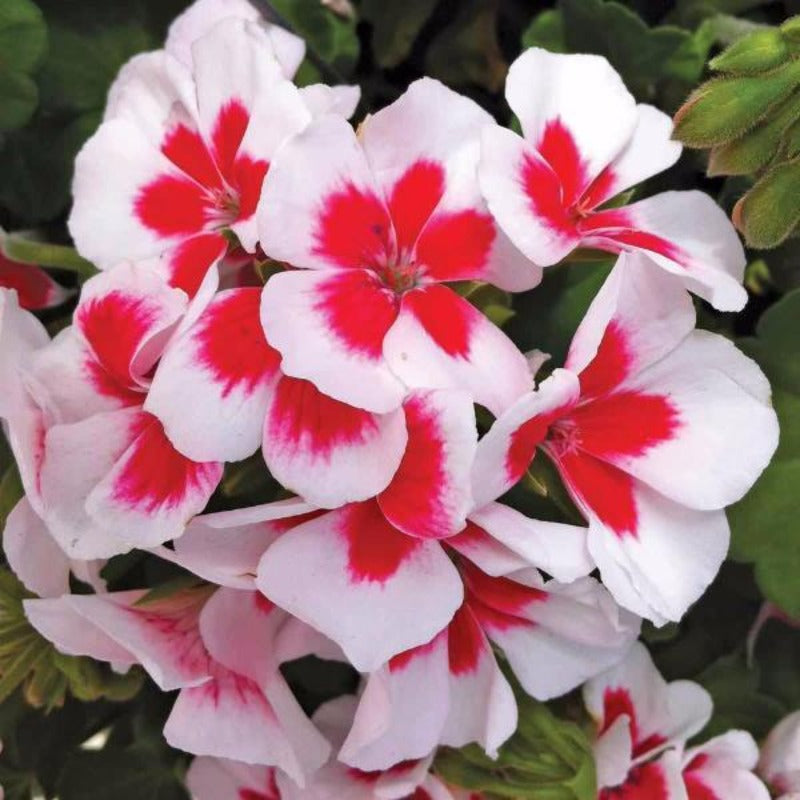- Species and varieties: Pelargonium, commonly known as geraniums, belong to the Geraniaceae family. The white flower variety is particularly popular for its elegant and pure appearance. There are several species within the Pelargonium genus, including Pelargonium zonale (zonal geraniums), Pelargonium peltatum (ivy-leaved geraniums), and Pelargonium graveolens (scented geraniums).
- Hybrid or heirloom: Pelargonium white flower seeds can be found in both hybrid and heirloom varieties. Hybrid varieties are often bred for specific traits such as disease resistance, flower size, and color consistency. Heirloom varieties are open-pollinated and have been passed down through generations, maintaining their original characteristics.
- Pruning and training: Regular deadheading of spent flowers will encourage continuous blooming. Pruning can be done to shape the plant and remove any leggy growth. Pinching back the stems will promote bushier growth. In late winter or early spring, a more significant pruning can be done to rejuvenate the plant.
- Fertilization needs: Pelargoniums benefit from regular feeding with a balanced, water-soluble fertilizer. During the growing season, fertilize every 2-4 weeks. Avoid over-fertilizing, as this can lead to excessive foliage growth at the expense of flowers. A slow-release fertilizer can also be used at the beginning of the growing season.
- Hardiness zones: Pelargoniums are typically grown as annuals in USDA hardiness zones 9-11. In these zones, they can be grown outdoors year-round. In cooler climates, they are often grown as annuals or brought indoors during the winter months.
- Climate requirements: Pelargoniums thrive in warm, sunny climates with well-drained soil. They prefer temperatures between 65-75°F (18-24°C) during the day and slightly cooler temperatures at night. They require full sun to partial shade and should be protected from frost.






